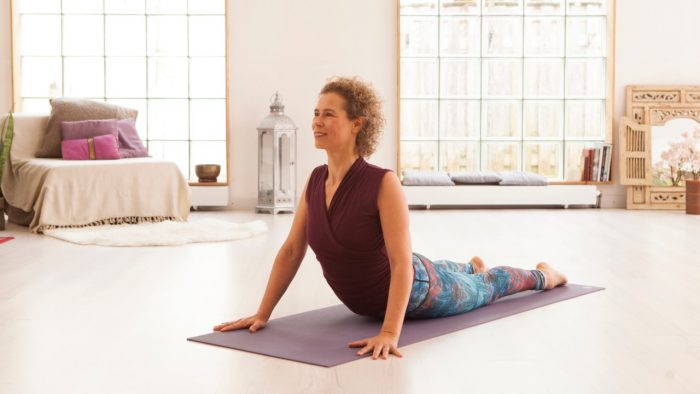The Yoga poses or Asanas are a primordial part of spiritual worship in the art of yoga, initially, the Asanas served as stable poses for prolonged meditation. Each Asana brings physical as well as mental strength, health, and vigor, doing the Asanas requires you to revise each Yoga Asana and perform it slowly as you control your body and your mind.
Be kind to yourself when practicing Yoga, go gradually and listen to your body, Yoga is not a competitive sport, do not try to force a pose because you will not benefit from the pose and you may be injured in the process, make sure you can take breaths slowly and deeply.
Yoga Asanas can be done by people with diverse profiles and conditions or even physical difficulties. Whenever possible, seek out a good teacher; books and videos are also a great help.
The following are just a few of the numerous Yoga poses types that have evolved over thousands of years:
Seated poses:
Seated poses are decidedly recommended for beginners, most of the postures are quite easy to master. Performing seated poses develop elasticity to the hips, knees, ankles, and groin muscles, improve your posture, remove tension in the diaphragm, increases the blood circulation to all parts of the body. Many seated postures are used to treat medical conditions, such as constipation, diabetes, arthritis, and genital diseases. Some seated poses include the Sukhasana, Bound Angle Pose, and the Half Lotus.
Certain seated poses are often used as a warm-up or as a starting point for other poses.
Standing poses:
Standing poses are beneficial for strengthening your muscles, opening your hips, improving posture, and invigorating the whole body. Standing postures require both strength and flexibility needed to achieve and accurately execute standing postures of yoga. Some of the positions you may encounter in the standing position include Adho Mukha Svanasana (Downward-Facing Dog), High Lunge; Triangle pose; Utkatasana (Powerful Pose); Vrksasana (Tree Pose); Dolphin Pose; Reverse Warrior; Standing Forward Bend; and the Tadasana (Mountain Pose).
Standing poses are often used as a warm-up or as a starting point for other poses.
Balancing poses:
Balancing poses are great for improving balance and coordination, strengthen specific body parts such as the shoulders and back as well as developing your ability to remain grounded in a pose. Some balancing poses include Bakasana (Crane Pose); Sarvangasana (Shoulder Stand); Crow Pose; Headstand; and Halasana (Plough Pose).
Backbends:
Backbends are probably the most challenging poses in Yoga; they require strength in the arms, legs, buttocks, and spine. Backbends pose squeeze the abdominal organs, energize the heart and soul, open the chest, improve spinal flexibility, and strengthen your back. Backbends should not be done by people with back problems, pain, or injury. Some balancing poses include Dhanurasana (Bow Pose), Matsyasana (Fish Pose), Bhujangasana (Cobra Pose), Ushtrasana (Camel Pose), and Setubandhasana (Bridge Pose).
Forward bends:
Similar to backbends, forward bends help keep your spine strong and supple. Forward bends are also often used to release tension, improve mental concentration, calm your mind, and soothe your nervous system.
Relaxation and restorative poses:
These poses are designed for when you feel fatigued, weak, or stressed out from daily life; they are also useful to practice when you are sick, unwell, or recovering from childbirth. Typically these poses make use of props in order to provide support and comfort to the body.


 Share on bsky
Share on bsky





Read 0 comments and reply